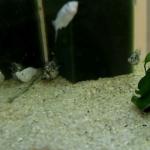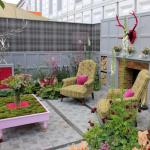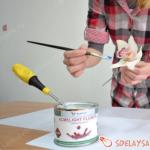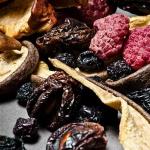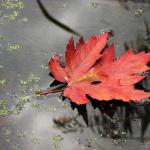Hydrangea - types and varieties.
Hydrangea (lat.Hydrángea)- a genus of perennial flowering plants belonging to the Hortensia family. The genus consists of 70-80 species: most of them are shrubs or low trees, less often lianas, reaching a height of 25 meters. Most types of hydrangeas are deciduous, but there are species and evergreens that are cultivated only in the tropical climate zone.
Range - South and East Asia, America. The greatest species diversity is found in China. Several species grow in Russia in the Far East. In culture, it is grown everywhere.
In Russia, the most commonly cultivated are: panicle hydrangea (H.Paniculata), tree hydrangea (H.arborescens), large-leaved hydrangea (H.macrophylla) and , less often - Bretschneider hydrangea (H. Bretschneideri), serrate hydrangea (H. cerata), ashy hydrangea (H. ceneria).
Hydrangea leaves are opposite, oval, serrated along the edge, pointed at the ends.
The flowers are bisexual, collected in large inflorescences: fertile (fertile) and sterile (infertile). Sterile flowers are larger, up to 2 cm in diameter, often with 4-5 sepals. Usually, fertile flowers are in the center of the inflorescence, and sterile on the outer edge. Such inflorescences are called viburnum. Many species have only sterile flowers, and there are species that have fully fertile flowers. Such inflorescences look more magnificent and elegant. There is also a chaotic arrangement of flowers in the inflorescence. Sterile flowers are simple, but there are hydrangea varieties with double flowers. The flowers of most species are white, cream, milky yellow, greenish. Some take on a pink tint towards the end of flowering.
The color of large-leaved hydrangea depends on the acidity of the soil: on acidic soils, the petals turn blue, on neutral soils they take on a pale beige color, on alkaline soils they become pink or pink-lilac. Hydrangeas are among those rare plants that can accumulate aluminum released from acidic soils, thereby giving flowers blue hues.
corymbose hydrangea inflorescences 15-25 cm in diameter can be flat, spherical or hemispherical, and pyramidal. According to the flowering period, most species are summer-blooming (June-mid-August), some species are autumn-blooming. hydrangea bloom continues for over a month.
The root system of hydrangea is shallow, but highly branched.
Location and care of hydrangea.
In Central Russia, for growing highly decorative specimens of hydrangea, it is necessary to carefully consider the choice of a place for planting hydrangeas. It is better to choose a plot in a semi-shady one, but the hydrangea can also put up with a sunny location, the main thing is that there should be light shading at noon. Also, the plant needs protection from strong cold winds. Close proximity to trees that absorb a large amount of moisture is undesirable, because hydrangeas have an increased need for soil moisture.
Landing.
 The plant grows well in moist, acidic, humus-rich soils. When planting, the landing pit is filled with humus, leafy soil, peat and sand in a ratio of 2:2:1:1. The introduction of lime is excluded.
The plant grows well in moist, acidic, humus-rich soils. When planting, the landing pit is filled with humus, leafy soil, peat and sand in a ratio of 2:2:1:1. The introduction of lime is excluded.
Hydrangea is planted in the spring, in the southern regions autumn planting is possible. The distance between plants should be at least 1 meter. The root neck is left at the level of the soil. Landing pits measuring 50 * 50 * 50 cm have been prepared since autumn. After planting, the plants are abundantly watered with soft rainwater and, to preserve moisture, they are mulched with humus or peat with a layer of 5-10 cm. In autumn, the bushes are spudded to a height of 15-20 cm.
If you purchased a hydrangea in a container, that is, with a closed root system, then it can be planted throughout the growing season. The main condition: to provide the seedling with sufficient watering during the period of root growth. If planting is done in hot weather, then it is better to cut off some of the leaves for less evaporation of moisture, and it is imperative to mulch the soil under the bush with a thick layer of organic matter (bark, needles, mowed grass, etc.)
Feeding hydrangeas and watering.
Hydrangea, or hydrangea, translated from Latin, means "a vessel with water." The name itself says that the plant is moisture-loving. In the dry period, she needs weekly deep watering: 2-3 buckets for an adult plant. In rainy times, 1 watering per month is sufficient. To make the shoots more durable, watering with a weak solution of potassium permanganate is recommended.
Hydrangea is responsive to feeding. In the spring, a mineral mixture with microelements is added: urea 20g, superphosphate 30g, potassium sulfate 40g. The second top dressing during the development of buds: superphosphate 60g and potassium sulfate 40g. In summer, you can feed mullein infusion 2-3 times.
Pruning.
To obtain a strong and tall annual growth and large inflorescences, a strong hydrangea pruning. For all species, it is carried out in different ways - it all depends on which shoots form inflorescences. The best time to prune is early spring, as soon as the snow melts and it is possible to inspect the bush, so that there is enough time for the growths to develop with flower buds. Sometimes you can do autumn pruning.
Hydrangea paniculata and hydrangea arborescens form inflorescences on the shoots of the current year. With a strong pruning of hydrangeas, powerful flower shoots are formed on the bushes, on which huge lush inflorescences will bloom in August-September. If you do not carry out systematic pruning of plants, then the bushes will thicken greatly, and weak shoots will not be able to hold heavy inflorescences. In addition, in thickened bushes, flowering is noticeably reduced. After pruning, the bushes must be fed so that the shoots are more powerful and strong.
In the first year after planting, pruning is done in order to form strong skeletal branches. If the plant is still small, then 1/3 of the length of the stems is cut off. In large bushes, pruning should be stronger - 2/3 of the length of the shoots.
In the second and subsequent years, the growth of the previous year is cut off. To do this, 1-2 developing buds are left above the older part of the stem. The soil at the base of the bush should be mulched with a thick layer of compost or other mulching material. Mulching stimulates the growth of new shoots. A few years after planting, skeletal branches can thicken, therefore, in addition to pruning, thinning is a must.
If the hydrangea bushes are quite old, then they are rejuvenated pruning "on the stump" (leave the length of the shoots no more than half a meter). After such a strong pruning, flowering will come only next year.
And ground cover hydrangeas are lightly pruned for better branching and more abundant flowering. Weak shoots are removed "on the ring".
Large-leaved hydrangea blooms on the shoots of last year. It is not necessary to shorten the shoots, only weak and thin ones are cut out. Also, sanitary pruning is carried out.
Cut hydrangea stems can be used for cuttings.
Reproduction of hydrangea.
All hydrangeas reproduce very well. There are many ways of reproduction: cuttings, dividing the bush, layering, grafting and seeds. Propagation by seeds and grafting is more labor-intensive and less efficient, so it is not currently used.
Reproduction of hydrangea dividing the bush suitable for all kinds. This is the easiest way, but not always suitable, since you have to dig out the bush completely. This operation is carried out in spring or autumn. The excavated bush is cut into plots in such a way that 2-3 renewal buds remain on each part. Further actions as during landing.
Reproduction by layering. Annual shoots, bent down, are placed in a small groove dug near the bush, and pinned. There should be a shoot with 1-2 buds in the groove. A peg is placed nearby and the apical part of the shoot is tied to it so that it stands straight. The apical part should be at least 15 cm. Then the groove is well watered and covered with light nutrient soil. When the shoot takes root, it is cut off from the mother bush, carefully dug up and transferred to a permanent place with a clod of earth.
The most convenient and most common method used for reproduction, hydrangea cuttings spring or summer cuttings.
In early June, spring cuttings are taken. To do this, you need to cut off a branch 12-15 cm long so that a "heel" remains on it, that is, a small part of the bark from last year's shoot.
In July, until the shoot is woody, summer cuttings are taken. They are cut from the top part of the growth of the current year.
Prepared cuttings should have 2-4 internodes. The leaves are shortened by half for less evaporation of moisture, and the leaves are completely removed from the lower internodes. For better rooting, the lower part of the cuttings is powdered with a root formation stimulator and planted in nutrient soil, keeping a distance between hydrangea cuttings of at least 15-20 cm. The soil can be used the same as when planting. One or two internodes should be in the ground. River sand is poured on top of the plantings with a layer of 2-3 cm. The leaves are sprayed from a small spray gun and covered with a cut plastic bottle with a twisted cork for air ventilation. Rooting cuttings occurs within 3-4 weeks.
In areas with a harsh climate, in the first year of rooting, it is recommended that the cuttings be transplanted into pots and brought into a room or stored in frost-free basements. An earthen ball in a pot must be kept moist. In the spring of next year, cuttings can be planted in open ground in a permanent place. The first 2-3 years, young plants need to be covered for the winter.
For large-leaved hydrangea, winter cuttings are possible. In October, mother plants are dug up and transplanted into pots. Until January, they are kept at a temperature close to zero. Then the temperature in the room is raised to 10 ° C. After 10-12 days, the hydrangea starts to grow. In February, green cuttings are taken from the mother liquors and rooted in boxes with nutrient soil. The cuttings take root quickly and form a well-branched root system by the time they are planted in the ground.
When growing hydrangeas from cuttings, flowering occurs in 2-3 years.
Shelter for the winter.
Most hydrangeas grown in temperate climates do not need special shelter. Only the first 2-3 years for the winter, the root system is spudded with earth and covered with fallen leaves. The exception is large-leaved hydrangea. She needs more thorough shelter, which is not removed until the end of spring frosts.
Cover hydrangeas in late autumn, when the top layer of soil is already frozen. It is best to do this in dry weather. The easiest way to hide: the stems are gently bent to the ground and a frame is placed above them. Remember that flower buds are laid on the tops of the shoots, so you need to make sure that they are completely under the frame. To do this, you can use a large plastic box with holes. From above, we tightly wrap the box with a dense covering material in 2-3 layers. In the spring, as early as possible, we rake the snow from the shelter and slightly open the ends. Thus, we will provide the plant with good ventilation and ventilation.
Hydrangea in garden design.
 Hydrangeas are garden decoration throughout the season. They are appropriate in gardens of any style: both strict regular and rural natural. Just for each style of garden you need to choose certain types. Hydrangeas can be planted on the lawn both singly and in groups, in compositions with conifers or deciduous shrubs, in flower mixborders. Abundantly flowering hydrangea bushes, acting as a soloist in autumn compositions, look advantageous. Spectacular hydrangea bushes will be a wonderful decoration shady garden, for which it is not so easy to choose an assortment of plants. From petiolate hydrangea, you can create a dense hedge or screen.
Hydrangeas are garden decoration throughout the season. They are appropriate in gardens of any style: both strict regular and rural natural. Just for each style of garden you need to choose certain types. Hydrangeas can be planted on the lawn both singly and in groups, in compositions with conifers or deciduous shrubs, in flower mixborders. Abundantly flowering hydrangea bushes, acting as a soloist in autumn compositions, look advantageous. Spectacular hydrangea bushes will be a wonderful decoration shady garden, for which it is not so easy to choose an assortment of plants. From petiolate hydrangea, you can create a dense hedge or screen.
Hydrangea inflorescences are great for cutting. To keep them fresh longer, the ends of the shoots should be split with a sharp knife and burned.
Also, you can make from hydrangea inflorescences dry bouquets. Shoots are cut at the end of flowering, when they have a rich color. They are suspended in a well-ventilated room or under a canopy with inflorescences down, after cutting off the leaves. This will preserve the natural color of the flowers. To create winter compositions, dried sprigs of Lunaria with transparent mother-of-pearl plates can be added to hydrangeas with white inflorescences.
Types and varieties of hydrangeas.
Hydrangea tree (lat. Hydrangea arborescens).
 The most common names for tree hydrangea are such as “white bush hydrangea”, “snowy hills”, “smooth hydrangea”, “white globular hydrangea”. These names came from the shape of the inflorescences and the texture of the flowers.
The most common names for tree hydrangea are such as “white bush hydrangea”, “snowy hills”, “smooth hydrangea”, “white globular hydrangea”. These names came from the shape of the inflorescences and the texture of the flowers.
Hydrangea arborescens is a straight-growing bush with a height of 1 to 3 meters. The leaves are oval, serrated along the edge, hairless, on long petioles. The upper side of the leaf blade is green, the lower side is lighter, bluish. Inflorescences are flat or spherical in diameter reaching 12-20 cm, formed on the shoots of the current year. The flowers at the beginning of the dissolution have a greenish tint, when fully opened - white or cream. The inflorescence is dominated by fertile (fertile) flowers, so it looks larger, lush and airy.
Tree hydrangea is an unpretentious, shade-tolerant and fairly winter-hardy plant. This species is suitable for beginner gardeners. Due to the rapid growth of shoots (annual growth is 20-25 cm), the seedling turns into a luxurious flowering bush within three years. Despite the fact that the shoots do not fully ripen by the time of autumn frosts and may freeze slightly in winter, spring pruning contributes to the rapid recovery of the plant. Flowering in hydrangea tree occurs earlier than in other species, and lasts from July to late autumn.
Based on this species, a large number of garden forms and varieties have been bred. The most common in central Russia and the most winter-hardy are:
— Annabel (Annabelle)- a powerful domed bush 1-2 meters high. The crown is wide-spreading, reaches a diameter of 3 meters. The leaves are 10-15 cm long, retain their original green color until the leaf fall. Inflorescences - huge white "caps". Flowering is plentiful, lasts from June to September.
— Sterilis- the height of the bush is 1.5-2 m with a crown with a diameter of up to 2.5 m. Snow-white inflorescences, consisting of sterile flowers, dense, heavy, hemispherical in shape, 20-25 cm in diameter. Flowering occurs in July and lasts until late autumn.
— Grandiflora (Grandiflora)- a shrub with creamy inflorescences and a chic crown up to 3 m in diameter. Bush height 1.5-2 m. Flowering time: June-September.
Recently, new varieties of tree hydrangea have appeared:
"Bella Anna" with pink flowers;
"Invincible Spirit" with dark pink color of inflorescences at the beginning of flowering and bright pink at the end;
"Hayes Starburst" with double flowers.
Hydrangea paniculata (lat. Hydrangea paniculata).
 Paniculata hydrangea is found wild in China, Japan and South Sakhalin as shrubs or small trees. For the garden, it is one of the most decorative, eye-catching and abundant flowering plants. It is a hardy hardy shrub. The leaves are oblong, opposite, retain their green color in autumn. Pyramidal inflorescences consist of fertile and sterile flowers. It blooms on the shoots of the current year, which allows painless spring sanitary pruning.
Paniculata hydrangea is found wild in China, Japan and South Sakhalin as shrubs or small trees. For the garden, it is one of the most decorative, eye-catching and abundant flowering plants. It is a hardy hardy shrub. The leaves are oblong, opposite, retain their green color in autumn. Pyramidal inflorescences consist of fertile and sterile flowers. It blooms on the shoots of the current year, which allows painless spring sanitary pruning.
The first flowers bloom in June, but the main abundant flowering occurs in August-September.
A variety of varieties and high winter hardiness allow paniculate hydrangea to take pride of place in many gardens. Varieties differ in the size of the bush, the diameter of the inflorescences, the location and color of sterile flowers.
The most widespread is the Grandiflora variety with dense white inflorescences up to 30 cm long, consisting mainly of sterile, honey-smelling flowers. During abundant flowering requires a garter. The height of an adult bush reaches 2m.
Limelight- a late-flowering variety with the largest paniculate inflorescences among other varieties of hydrangea, which, with good care, reach a length of 40-50 cm. At the beginning of flowering, sterile flowers have a greenish tint, and by September they become creamy white. A tall bush up to 2m in diameter keeps its shape perfectly.
Vanilla Fries- a variety of hydrangea with beautiful white flowers, in August the inflorescences turn pink, and in September they have an almost red tint, while the top of the inflorescence invariably remains snow-white. Bush no more than 1.5 m high, but very lush and compact.
Kyushu- an early flowering variety with white inflorescences that change shade to pink, consisting of sterile and fertile flowers. Flowering is long: from June to mid-October. This "native of Japan" can tolerate any growing conditions: from urban smoky gardens to low wetlands. It tolerates temperature changes well. Winter-hardy. The height of the bush is 1.5-2m.
No less popular variety Pinky Winky. Sterile flowers predominate in pink-red inflorescences. Flowering: August-October.
For growing in small gardens, dwarf forms of paniculate hydrangea are suitable.
Variety Bobo- inflorescences are pale pink.
Variety Bomshell- inflorescences are white.
Variety Brussels Leys- ivory inflorescences, consisting of sterile and fertile flowers.
Variety Dart little dot (Dart's Little Dot)- dwarf hydrangea with corymbose pink inflorescences. The central flowers are fertile, the marginal flowers are sterile. The height of the bush is up to 0.8-1m.
Large-leaved hydrangea (lat.Hydrángea macrophýlla).
 Hydrangea large-leaved, or garden hydrangea, attracts the attention of gardeners with its chic inflorescences and a wide variety of colors. But, unlike other common species, it is less winter-hardy and requires special care.
Hydrangea large-leaved, or garden hydrangea, attracts the attention of gardeners with its chic inflorescences and a wide variety of colors. But, unlike other common species, it is less winter-hardy and requires special care.
Homeland garden hydrangea - China, Japan, Sakhalin. In nature, it is a shrub with a height of more than 3m. In culture, the height of the bush does not exceed 2 m, and the "container" varieties are only 0.5-0.8 m.
The foliage of the large-leaved hydrangea is bright green, the shoots of the last year are lignified, and the shoots of the current year are herbaceous. Young shoots cannot stand our harsh winters and tend to freeze. The flowers are mostly sterile up to 3.5 cm in diameter. Inflorescences and their color may be different. For the breeding of modern varieties, two varieties of garden hydrangea were used: "Japanese" - with umbrella viburnum inflorescences and "changeable" - with hemispherical. Variable hydrangea has an unstable color: on neutral and alkaline soils it is pink or red, and on acid soils it is blue or blue. To maintain blue hues, the soil under the plants is acidified with a solution of potassium alum or copper sulphate.
Flower buds of large-leaved hydrangeas are laid in autumn and are located at the ends of the shoots of the current year. Given that these shoots go under the snow not lignified, flower buds, as a rule, are very difficult to preserve during the winter period. The bush itself winters normally, and even if it freezes, it will release new shoots in the spring, but there will be no flowering. To protect flower buds, large-leaved hydrangea is grown as a houseplant or provided with good cover.
In the first case, the plant must be transplanted into a container and brought for the winter period in a bright, cool room or in the basement. Usually, this is done with hydrangeas bought in a store as a gift "bouquet in a pot."
At the beginning of the 21st century, new unique varieties of garden hydrangea appeared, which are distinguished not only by good winter hardiness, but also by the possibility of flowering on the shoots of the current year. Thanks to this, the large-leaved hydrangea began to appear more and more often in the gardens of gardeners in the middle lane. For abundant flowering for the winter, it is advisable to spud the bushes with earth and cover with spruce branches. Currently, various series of frost-resistant varieties of large-leaved hydrangea are on sale.
Series "Forever & Ever" (Forever & Ever). The peculiarity of the varieties of this series lies in their continuous flowering: on last year's shoots - in June-July, on the shoots of the current year - in August-September.
Sort Expression ("Expression")- the height of the bush is 70-80 cm, the flowers are double with a jagged edge of a rich pink color.
Variety Ever Peppermint ("Ever Peppermint")- the height of the bush is 60-70 cm, the flowers are two-colored with a pink or blue (depending on the acidity of the soil) center and light edges.
Variety Red Sensation ("Red Sensation")- the height of the bush is 70-80 cm, the flowers are red, it blooms twice (on the shoots of the last and current year).
